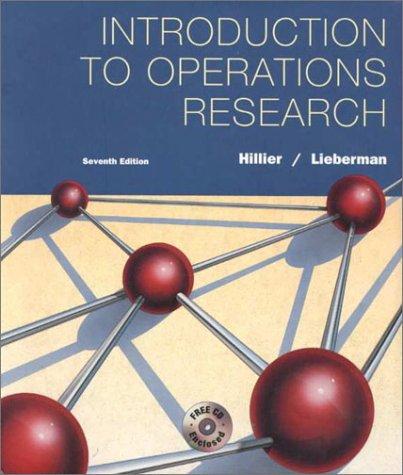The Energetic Company needs to make plans for the energy systems for a new building. The energy
Question:
The Energetic Company needs to make plans for the energy systems for a new building.
The energy needs in the building fall into three categories:
(1) electricity, (2) heating water, and (3) heating space in the building. The daily requirements for these three categories (all measured in the same units) are Electricity 20 units Water heating 10 units Space heating 30 units.
The three possible sources of energy to meet these needs are electricity, natural gas, and a solar heating unit that can be installed on the roof. The size of the roof limits the largest possible solar heater o 30 units, but there is no limit to the electricity and natural gas available. Electricity needs can be met only by purchasing electricity (at a cost of $50 per unit). Both other energy needs can be met by any source or combination of sources. The unit costs are CHAPTER 8 PROBLEMS 397 Electricity Natural Gas Solar Heater Water heating $90 $60 $30 Space heating $80 $50 $40 The objective is to minimize the total cost of meeting the energy needs.
(a) Formulate this problem as a transportation problem by constructing the appropriate parameter table.
D,I
(b) Use the northwest corner rule to obtain an initial BF solution for this problem.
D,I
(c) Starting with the initial BF solution from part (b), interactively apply the transportation simplex method to obtain an optimal solution.
D,I
(d) Use Vogel’s approximation method to obtain an initial BF solution for this problem.
D,I
(e) Starting with the initial BF solution from part (d), interactively apply the transportation simplex method to obtain an optimal solution.
I
(f) Use Russell’s approximation method to obtain an initial BF solution for this problem.
D,I (g) Starting with the initial BF solution obtained from part ( f ), interactively apply the transportation simplex method to obtain an optimal solution. Compare the number of iterations required by the transportation simplex method here and in parts
(c) and (e).
Step by Step Answer:

Introduction To Operations Research
ISBN: 9780072321692
7th Edition
Authors: Frederick S. Hillier, Gerald J. Lieberman





